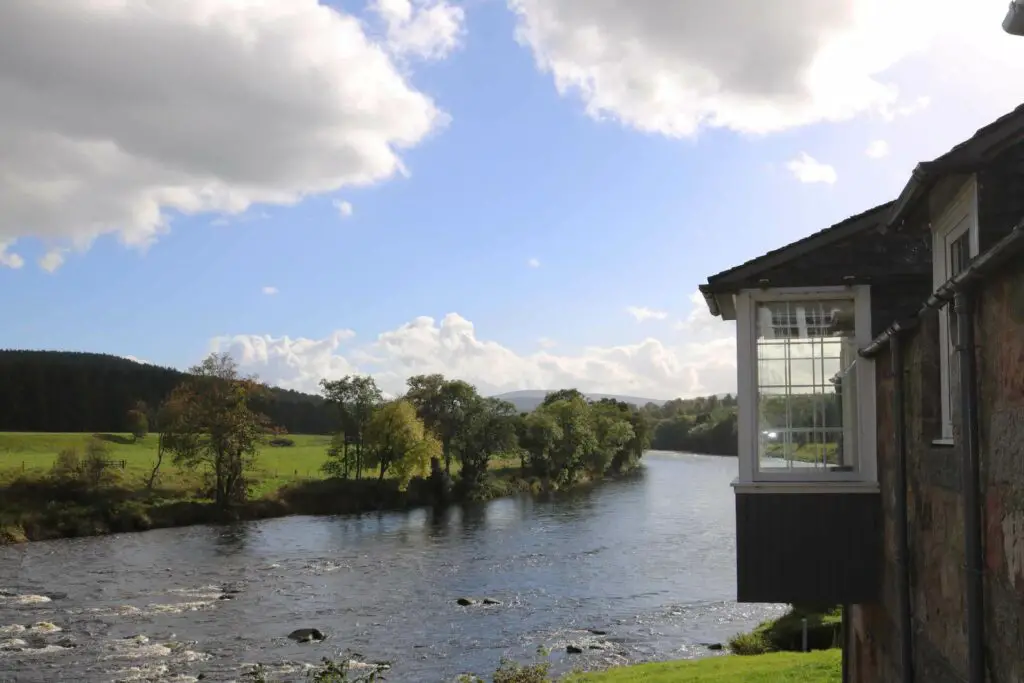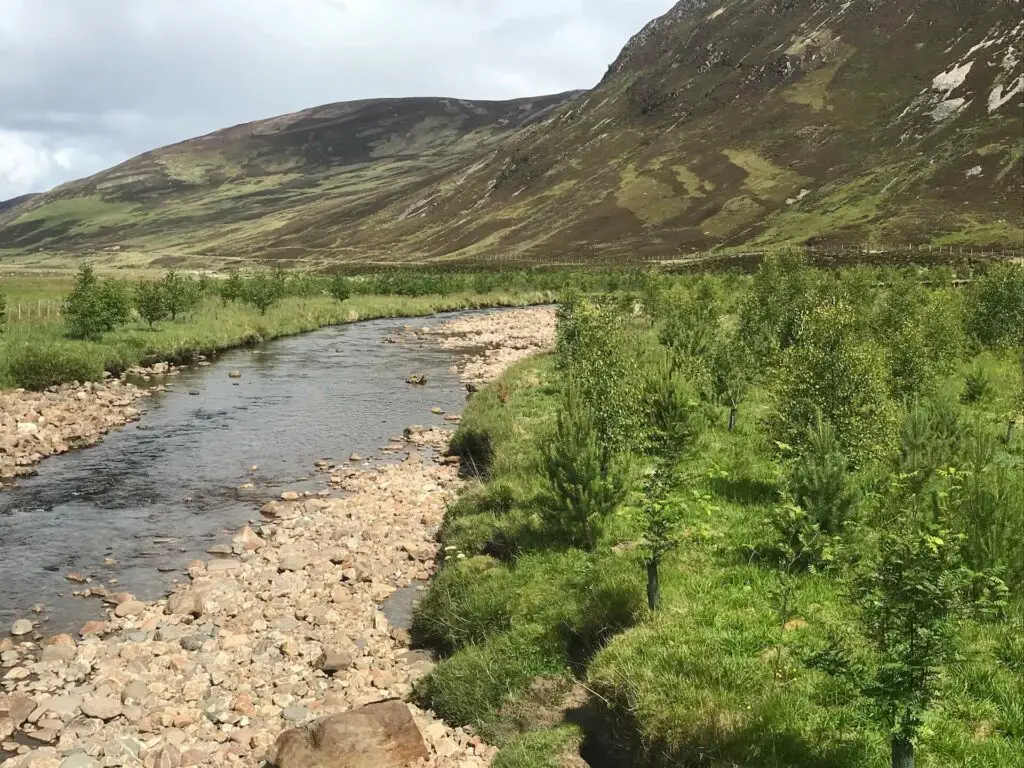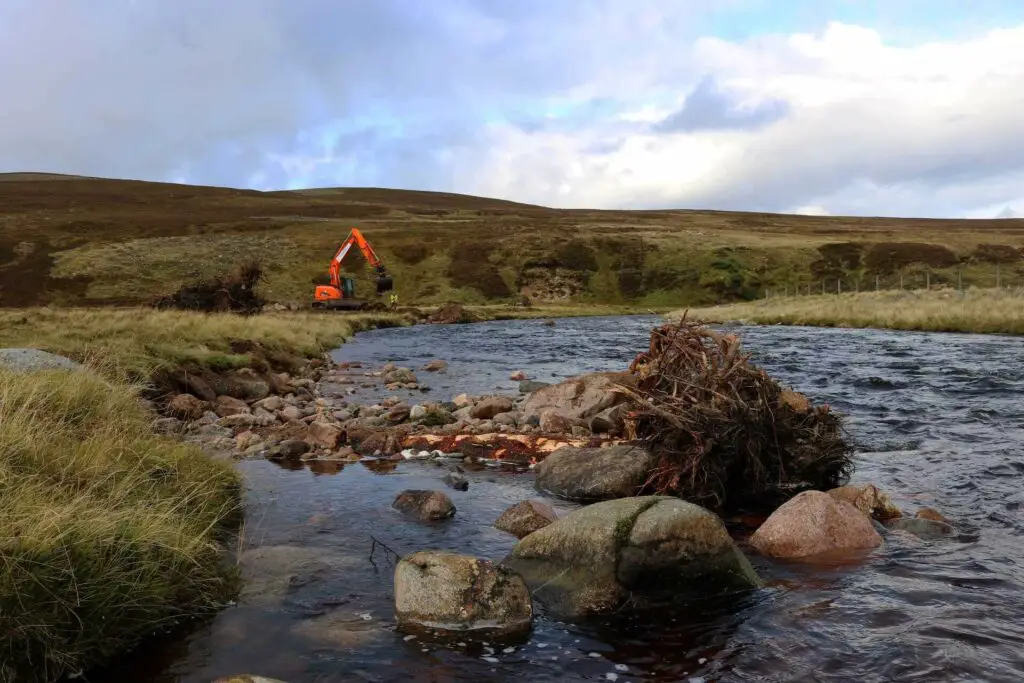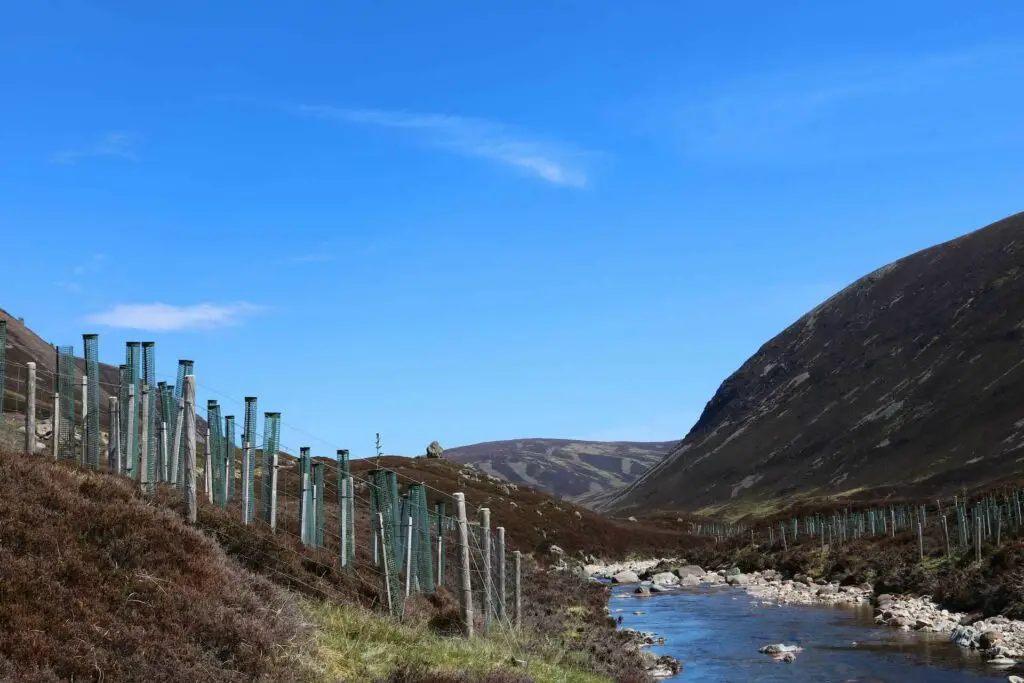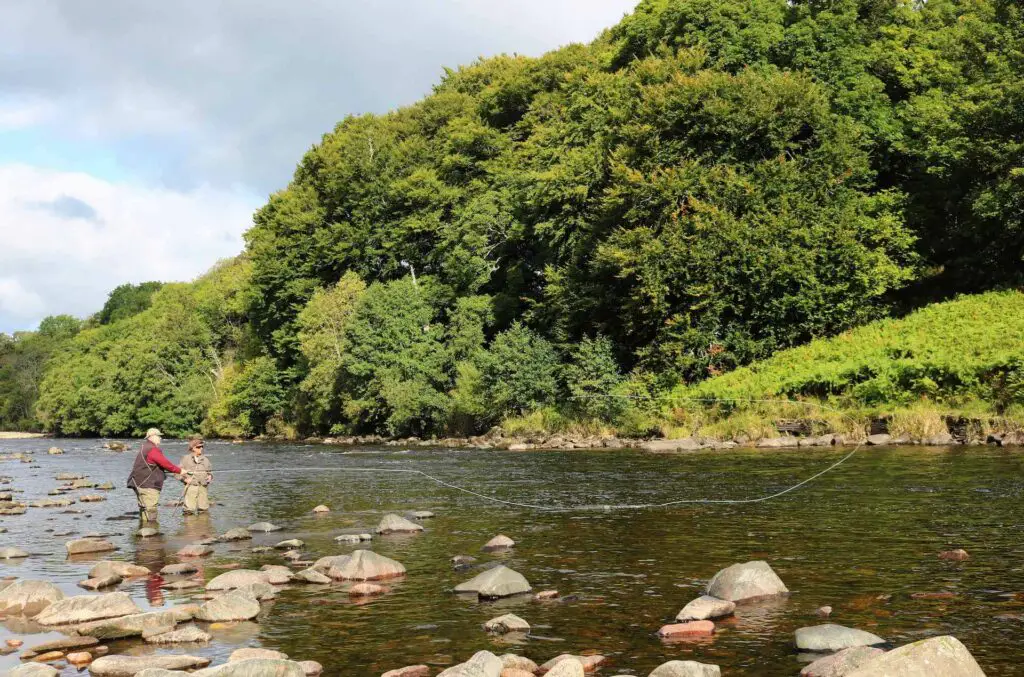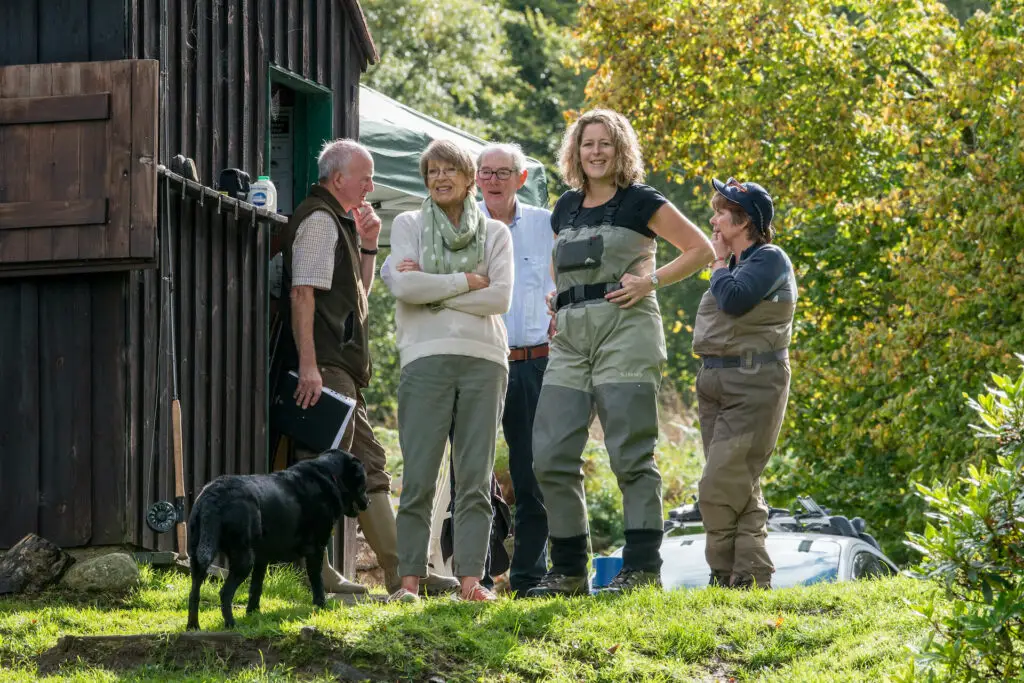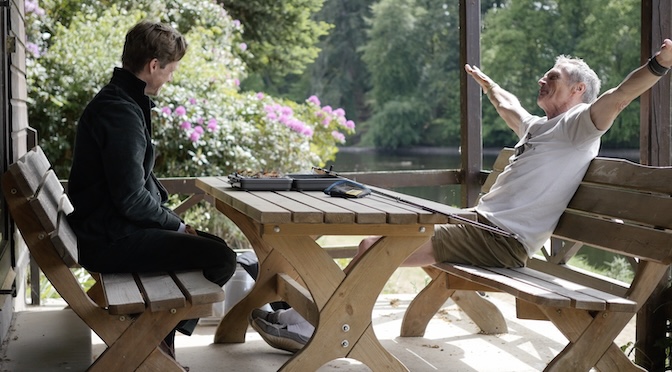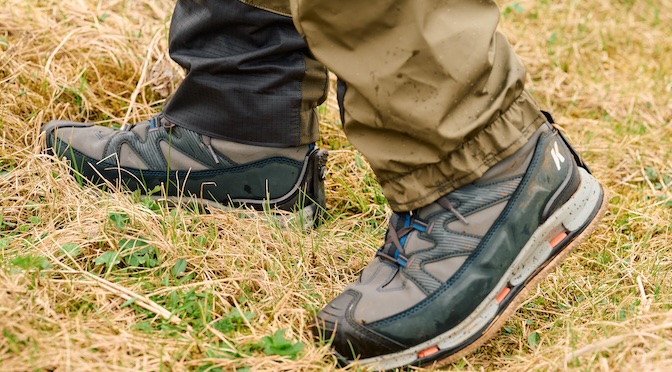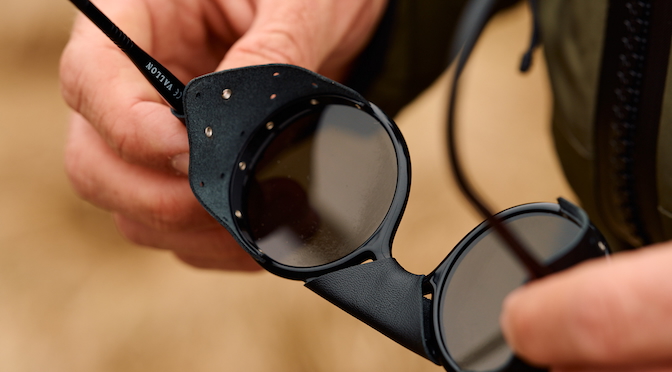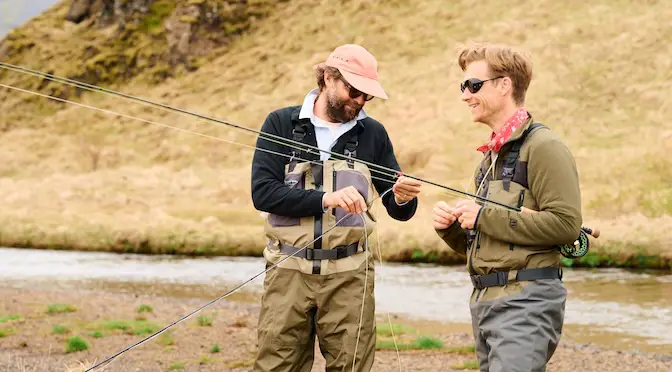Last updated on January 9th, 2024.
- Wading Wisdom #13 – Simon Gawesworth - July 7, 2025
- On the Water with the Korkers Bantam Lite - June 26, 2025
- How to Find Trout in Rivers & Streams Anywhere - June 13, 2025
The River Dee is music to the ears of salmon anglers anywhere. We spoke to the conservation organisation The River Dee about the work they do on location.
Many salmon rivers across Europe have seen a strong decrease in their runs over recent years. We had a chat with Lorraine Hawkins, River Director at the The River Dee about the importance of the River Dee, its current situation and what needs to be done in the future to conserve this fantastic salmon river.
Lorraine, what is the current condition of the River Dee?
The Dee has seen the declines that most rivers have, extending back to the 1960s. Over the last five years, the catches each year have been around 3,000-4,000, which is perhaps half of what they were previously, but the Dee is still one of the best Scottish rivers for salmon. The Dee was the first river in Scotland to introduce catch and release – 25 years ago – which was a result of declining catches reaching an all-time low in 1995. With over 99% of salmon now being returned to the river each year, we are grateful this practice was introduced when it was, otherwise the Dee salmon would no doubt be in a much worse state today.
The fishing season starts on 1st February, and salmon are caught from this point on until the season finishes in October, although February and March tend to be quieter months and have seen the worst of the long-term decline. Of course, 2020, and 2021 so far, have seen fishing restrictions relating to the covid-19 outbreak and therefore catches are not showing what our fish stocks are really like.
Your organisation works on different fronts to preserve the fantastic habitat that is the River Dee. What role does education play in this undertaking?
To quote the conservationist Jane Goodall, “Only if we understand, can we care. Only if we care, we will help”. Education is crucial in protecting the river, it is all very well having the science to guide us in what we should be doing, but education is crucial to getting the support to make it happen, whether that’s from anglers, fishery owners, the general public or government.
The two organisations that manage the river – the Dee District Salmon Fishery Board and the charitable River Dee Trust, have been delivering habitat restoration for over 20 years. I think it was always accepted that this was a useful thing to do, but previously the main focus was on helping fish stocks through artificial stocking of eggs or hatchery-reared fish. Over the last 15 years, we have worked hard to show that it is habitat restoration that will save our salmon, and not artificial enhancement programmes. This has been a challenge, but I think many people now understand this.
For example, when we started planting trees along the riverbanks 8 years ago, it drew the frequent question – how will trees help fish? There has been a lot of work to explain the benefits of trees, and now I think this message has been learned and these messages filter upwards: Scottish Government introduced restrictions to the use of stocking two years ago, acknowledging that the science shows they tend to be more damaging than useful when used as a restoration measure, and scientists are now recommending tree planting as a tool to save our salmon in the future, which government too is starting to support.
A key factor for successful spawning of Atlantic salmon is good habitat in the rivers. What can be done on rivers like the River Dee to improve that?
The first thing is to stop any further damage and destruction of habitat, and that includes tackling pollution and poor land management practices such as dredging of river beds. Buffer strips are a good solution to stop pollutants in overland run-off getting into watercourses. They help to filter the water, as well as protecting riverbanks. In terms of protecting our rivers for the future, then tree planting along riverbanks offers vital protection from the potentially devastating impacts of a warming climate and offer long-term improvements in fish habitat and food supply. Done appropriately, 50% tree cover can reduce stream temperatures by 2 – 3°C. We can also look to reinstate wetlands and bogs, which helps to regulate flows and provide clean water.
In the shorter term, there are more immediate solutions to improve habitat such as installing Large Woody Structures – tree trunks and rootballs of mature trees, laid into the river and secured by being dug into the bank – as these provide great habitat and affect flows to create a better variety of habitat for fish.
Finally, we are also looking into adding nutrients, to replace those which have been lost from river systems through the lower return rate of spawning salmon into catchments, and the input that once would have been received from riverbank trees. Nutrient addition can then help build production from the bottom of the food web all the way up to fish.
Another topic you are working on is the so-called “Million Trees Campaign”. What’s behind that?
Trees provide huge benefits to rivers. 70% of Scotland was once forested, and our salmon have evolved to live in forested river catchments. But Scotland is now one of the most deforested countries in Europe – the upper Dee has only 8% woodland cover – and our rivers are poorer as a result, with less nutrients, habitat, shade, flood control, biodiversity and buffering from the surrounding land.
Salmon directly benefit from trees – better habitat, more food, more protection from future climate changes, more shelter from predators and from floods, and better water quality. We have over 2,000 km of streams that feed into the Dee, and most of these in the upper catchment are devoid of trees. To achieve a real difference within the next 30-50 years, which is the timescale that climate projections suggest we will be seeing temperatures that could impact survival of salmon in some of our headwater streams, we urgently need to plant trees at a significant scale. In 2020, we set ourselves the challenge to plant one million trees along the banks of the Dee and its headwater streams, by the year 2035 and we launched a 2-minute campaign film. At the beginning of this year, we reached a milestone of quarter of a million trees planted.
You are also urging anglers to take action in the light of the upcoming parliamentary elections. What’s the focus here?
Tree planting has obvious benefits for carbon offsetting. Our government recognises this by financially supporting the creation of woodlands. However, this can result in mono-block plantations with benefits limited mainly to carbon capture. We want Scottish Government to provide greater support to tree planting that provides benefits to biodiversity, climate change resilience and natural flood management. This means stronger support for riverbank tree planting as this delivers these extra benefits. Because of the extra challenges of planting trees along riverbanks, rather than as rows and rows of trees in fields, it is more expensive and we think the government funding packages should reflect this.
In the run up to the Scottish Parliament election, Scottish anglers can help by contacting the political candidates in their constituency and region, asking them to commit to three actions which have been developed by our representative body Fisheries Management Scotland. These actions are to: Make saving Scotland’s salmon a national conservation priority; fund the planting of native trees beside those rivers vulnerable to damaging temperature rises; and implement in full the unanimous recommendations of the Salmon Interactions Working Group, which was established by the Scottish Government, comprising wild salmon conservation bodies and the fish farming industry.
What can salmon anglers around the world do to support the work you do on location?
Anglers from anywhere can support the Dee and our Million Trees Campaign directly, by funding a tree, a group of trees, and enclosure, or a legacy, here. They can also help spread the message of the campaign, as it is vital to increase the understanding of the perils that wild salmon now face if we are really to see any of our governments seeking to save wild salmon.
Is there some sort of concerted effort across Scotland to improve the conditions for Atlantic salmon or is it mostly individual efforts depending on the respective river?
Scottish rivers are managed by Salmon Fishery Boards and/or Fishery Trusts, and these are all represented by the national body Fisheries Management Scotland. Whilst individual Boards and Trusts make their own management decisions, they have common issues and FMS works at a national level to help with solutions. In the next few months, Scottish Government will be releasing its Wild Salmon Strategy, which was created with FMS and will provide a national picture of the issues facing our salmon stocks and the national support framework going forward. It comes down to individual fisheries organisations to deliver the solutions, but a lack of government funding for the wild fisheries sector has held back delivering solutions.
Anglers are often the most concerned with rivers since their sport depends on healthy habitat. How are you factoring this into your work?
Anglers have always been keen supporters of our work. They often have a better understanding about rivers – recognising when their rivers are healthy and identifying emerging problems – and they care; they are great guardians of the river. So, of course, we want there to be more anglers!
We are working on angling development initiatives to encourage new participants to the sport. We have set up Aberdeenshire Fly Fish 50, which is a way to help people who have never done fishing before along their fly fishing journey. Currently, we run a couple of courses each year, where people are shown how to fish over 3 sessions with qualified casting instructors. We also run introduction to salmon fishing days and other events, such as Ladies Days. In the future, we intend to expand on this further. Covid-19 has been a real ‘spanner in the works’ with these initiatives. Our goal is to ensure that people who don’t know any anglers, or have any fishing connections, can still take up this sport.
We are also combining an angling event this year with a fundraiser to help the habitat restoration work on the river. For this, we are holding our inaugural 24-hour fishing event, #FishDee24. We want to draw attention to the fishing opportunities on the Dee and raise money for river restoration work at the same time. For the 30 participants (we now have just 5 places remaining), this is a chance to fish different fishing beats and have a bit of fun with it, and the chance to win some nice prizes as well. The biggest prize, for the person who raises the most money, is the opportunity to have the ceremonial first cast at the River Dee’s opening ceremony on 1st February 2022.
What are the three most important topics regarding salmon conservation in Scotland for the next ten years?
Salmon farming
The wild salmon stocks on the West Coast of Scotland have been battling a huge threat for decades in the form of sea cage fish farming. The west coast salmon stocks are faring worse than Scotland overall, and clear evidence of mortal damage of smolts leaving west coast rivers are attributed to the lice from sea pens. Much tighter regulations are required for the aquaculture industry and a true focus on protecting wild salmon, rather than small efforts aiming to minimise harm.
Climate change
We need to build into our rivers resilience to climate change. With degradation of rivers and salmon habitat happening over hundreds of years, combined with declines in their marine survival over the last 6 decades, salmon are being hit with challenges each step of their journey. We need to act now or climate changes in the next few decades could be what pushes salmon stocks over the brink. This requires large scale native riparian tree planting, peatland restoration and more generally, for the needs of salmon to be fully linked to national policies relating to land use and conservation, recognising the link between salmon and the surrounding land.
Keeping anglers
Anglers play a vital role in the future protection and restoration of salmon stocks, and we need to work hard so that angling as a sport reverses its decline. Angling brings in essential revenue to fragile, rural economies, supporting jobs and supporting conservation. Participation in angling should be prioritised, making it accessible for all socio-economic groups. We need to do more to promote the virtues of angling to health, wellbeing and social cohesion.
Click here to learn more about the organisation

